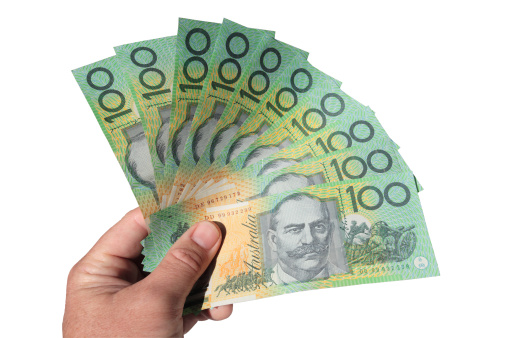Australian Dollar falls in response to lower-than-expected inflation figures.
The Australian Dollar (AUD) is under pressure after Australia’s Monthly Consumer Price Index (CPI) data came in lower than expected on Wednesday. Furthermore, the decrease in the S&P/ASX 200. Which came after sluggish price action on Wall Street overnight, heightened market concern ahead of the release of a series of economic data from the United States.
The Australian Consumer Price Index stayed stable at 3.4% in January, compared to the projected 3.5%.
The Australian Bureau of Statistics reported no change in The price of a predetermined basket of products and services purchased by household consumers. The Monthly Consumer Price Index (CPI) remained constant at 3.4% in January. Falling short of market estimates of 3.5%. Australian Dollar Investors are now looking forward to Thursday’s release of Australian Retail Sales data, which will provide fresh insights into the economy.
The US Dollar Index (DXY) remains stable as investors anticipate the release of the United States’ preliminary Gross Domestic Product Annualized (Q4). Which is planned for Wednesday. Market predictions predict that GDP will remain steady at 3.3% in the fourth quarter of 2023. The Federal Reserve (Fed) has signaled caution over swiftly decreasing rates, leading to a decreased possibility of any rate cut in March, which puts downward pressure on the US dollar.
Daily Market Movers: Australian Dollar Depreciates on Cooler Aussie Inflation Data.
The Australian Dollar (AUD) is under pressure after Australia’s Monthly. Consumer Price Index (CPI) data came in lower than expected.
Australian construction work done increased by 0.7%. In the fourth quarter of 2023, compared to previous estimates of 0.8% and 1.3%.
ANZ – Roy Morgan Australian consumer confidence is practically constant at 83.2 this week. This is the 56th week in a row that the index has been below 85. The index is only 0.4 points below the 2024 weekly average of 83.6.
The Reserve Bank of New Zealand (RBNZ) opted to keep the Official Cash Rate (OCR) at 5.5%. As largely predicted, during its February monetary policy meeting.
While recent statistics showed that inflation will return to target within a reasonable timeframe. The RBA’s Meeting Minutes that the Board deliberated on whether to raise rates by 25 basis points (bps) or keep them unchanged.
It is expected that China will remove tariffs on Australian wine by the end of March.
China levied these tariffs in retaliation for US activities against China under the Trump administration.
Santander US Capital Markets said in a note, as published by The Wall Street Journal, that the Federal Reserve’s FOMC may postpone rate reduction until after the election.
Santander US Capital Markets said in a note, as published by The Wall Street Journal, that the Federal Reserve’s FOMC may postpone rate reduction until after the election. They believe that the US economy and inflation will continue to outperform forecasts, which may justify delaying monetary easing.
According to the CME FedWatch Tool, the probabilities for March rate reduction have reduced to 1.0%, with the possibility iIn May and June, the rate was reduced to 21% and 49.8%, respectively.
According to reports, US House Speaker James Michael Johnson has notified the White House that he is willing to move the two funding deadlines to March 8 and March 22. Currently, funding is expected to expire for four legislation on March 1 and eight bills on March 8.
The US Housing Price Index (MoM) rose by 0.1% in December, falling short of the 0.3% projected and 0.4% before.
US Durable Goods Orders ex Transportation fell 0.3% in January, compared to an expected rise of 0.2% and a previous decrease of 0.1%. Durable Goods Orders ex Defense decreased by 7.3% in January, compared to a 0.1% increase the prior month.
US durable goods orders fell by 6.1%.Compared to the market expectation of a 4.5% drop and a previous reduction of 0.3%.
US New Home Sales Change (MoM) increased by 1.5% in January, falling short of the previous month’s surge of 7.2%.
In January, US new home sales (MoM) were 0.661 million, compared to expectations of 0.680 million and 0.664 million the previous month.









